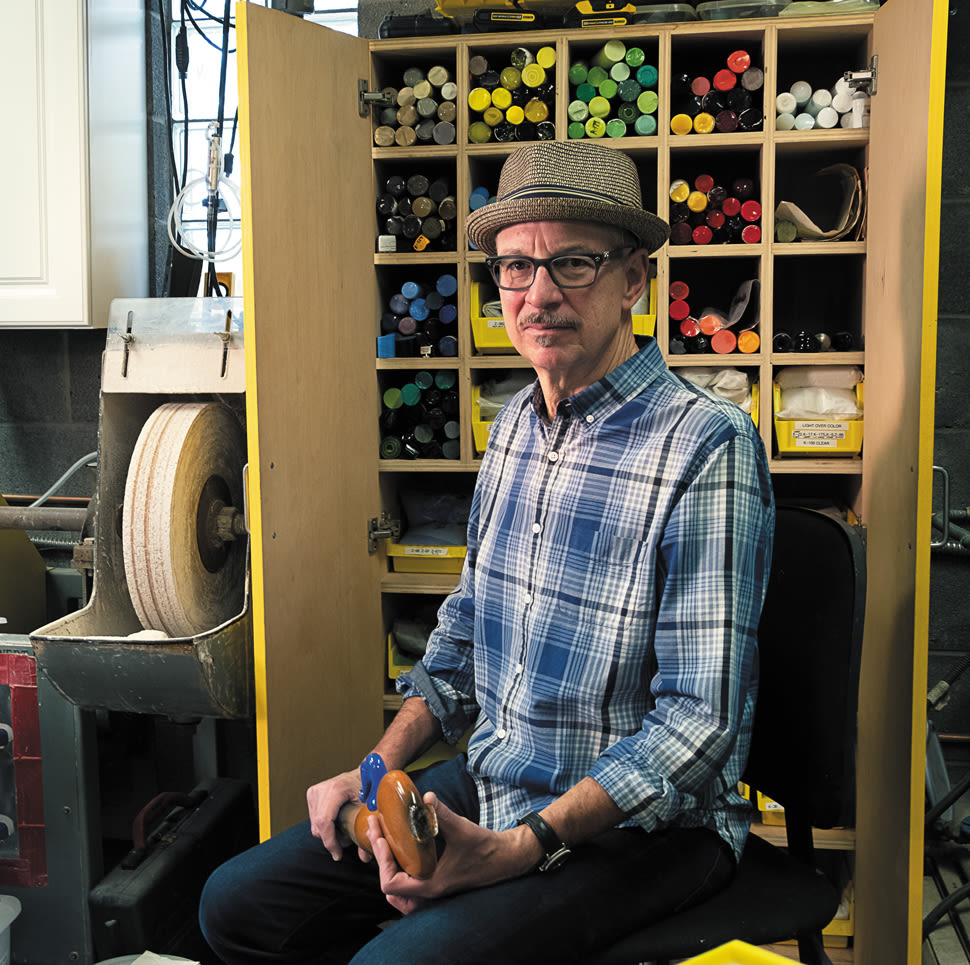José Chardiet Has a Signature Approach to Working with Glass

José Chardiet in his studio
Image: Summers Moore
Art and love brought José Chardiet to Aspen. He met his future wife at an art show here in 2003, then moved with her to the Roaring Fork Valley a decade later. Now, the Cuban-born, Connecticut-raised glass artist—who gave up a tenured professorship at the University of Illinois to dedicate himself to his studio craft—creates award-winning designs in his Missouri Heights workshop. Drawing on a self-taught style that combines metal and glass, Chardiet creates stunning sculptures and objets that are exhibited locally at Aspen’s Raven Gallery as well as nationally. He shared his process and inspirations with us.
Describe the type of sculptural glasswork you do.
I have a number of series. Still life, architectural structures, vessels, and teapots are the main ones right now. Predominantly, my work starts with glass blowing. I do what’s called hot work, which is essentially glass blowing, but you’re not always putting a bubble in it. Sometimes you’re gathering molten glass out of the furnace at 2,300 degrees and manipulating it. The techniques and tools I use have been around for thousands of years.
How do you choose such vivid hues?
I love working with color. The inspiration comes from all over the place—a butterfly in our yard, for example, or from books. I also look at magazines. My wife loves the Anthropologie catalog, which is great for color. Really, it can come from everywhere.
Where else do you draw inspiration from?
When I first started the still-life series almost 20 years ago, one of the main inspirations was African art. I went to an exhibit in Detroit that showed the influence of African art on 20th-century painters like Picasso. I was blown away. Now I have pieces in that museum collection myself. Over the years, my inspiration has shifted to other topics, such as gesture, the human form, and nature, but that exhibit really influenced my work early on.
Tell us about your process.
My work starts with drawing. I do sketches of different elements and then think about color combinations. In glass, you really have to plan it out. Once you start working, there are a lot of things that happen during the process that you have to react to. Glass has a mind of its own.
From beginning to end, how long does a piece usually take?
Easily a month. I sometimes feel guilty about how much time I spend in the workshop on these pieces, but it’s intense work.
How would you differentiate your work from that of other glass artists?
Because I come out of a fine-arts background, I think of myself as an artist who uses glass as his primary material. That’s different than other glass artists. And most of my influences come from art history and from contemporary painters and sculptors. I could see myself working in other materials as well.













































